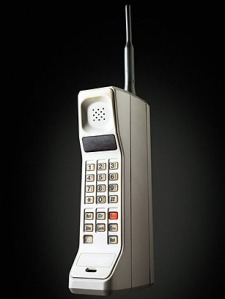It really was a low-tech iPod, popping up a whole quarter century before that “game-changing” gadget from Apple appeared on the scene. Because the Walkman was a game-changer, too. Before the Walkman, if you wanted to take your music on the go with you the only means was the socially impolite and physically unwieldy purveyor of noise pollution known as the monster boom box. The Walkman was much more portable and initially marketed towards people who enjoyed an “active lifestyle”–joggers, roller skaters and bicyclists. But soon, everybody wanted one.
Cassette tapes weren’t exactly a bottomless well of music–a full-length prerecorded cassette would give you about five or six songs a side, (much more if you were listening to Napalm Death!) while blank tapes would net you roughly two full-length LPs overall. That didn’t put quite as much music at your fingertips as a 160GB iPod Classic, but you could get around this by carrying around a Jansport backpack full of cassettes with you at all times. The marriage of cassette and player wasn’t always a peaceful one, either, every now and then the machine would “eat” a tape, splashing its innards outside its case in a horrifying tangle of brown tape.
Sound quality wasn’t the best. Even when nestled inside the precision-machined well of a Nakamichi Dragon, there were always major compromises in fidelity when using cassettes. In a portable device, imperfections like “hiss” “wow and flutter” and “total harmonic distortion” were even more pronounced. So it wasn’t like walking around with a miniature concert hall attached to your head. But neither is the iPod, which employs artificially compressed files delivered through tiny ear buds that probably aren’t much better than the cheap spongy headphones that came with the Walkman. So, examined this way, even through all these years, it seems like we’ve really only made gains in capacity since the heyday of the Walkman. And that isn’t much of a gain at all.
You can still buy pre-recorded cassettes at most independent record stores and Goodwill shops for a quarter apiece. And there are exactly 1,404 listings for Sony Cassette Walkmans on Ebay right this very minute! I think the answer is obvious. Long live analog!





